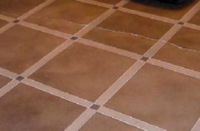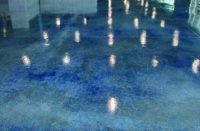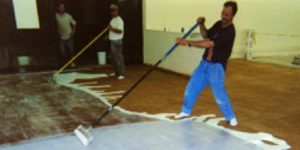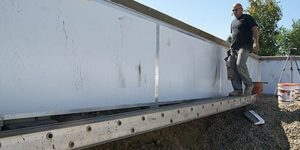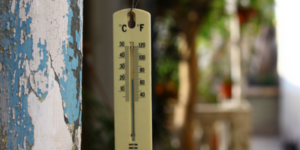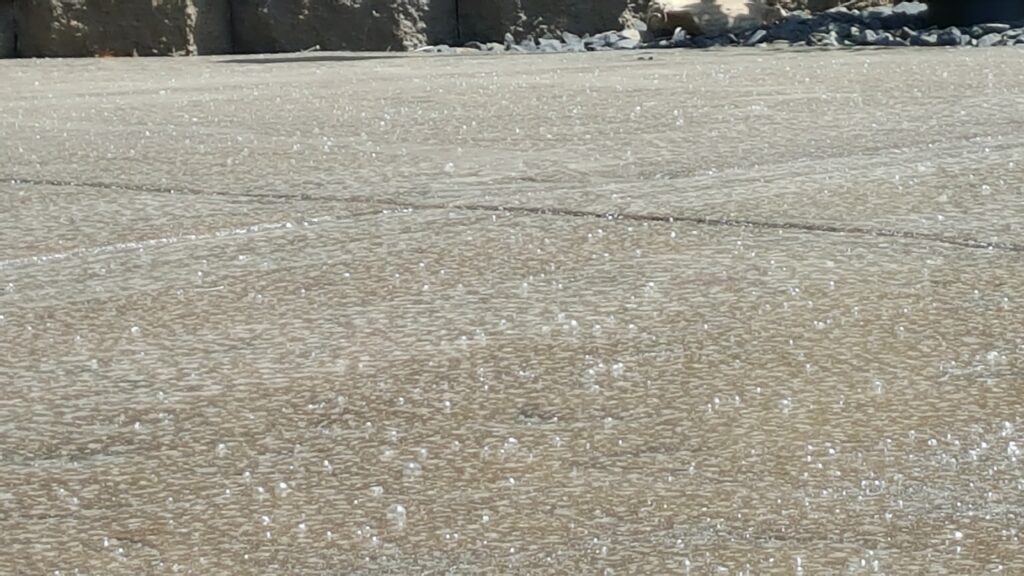
Throughout the course of its lifetime, concrete suffers many different forms of damage. Although concrete sealers add a protective layer to concrete floors and structures to help maximize their durability and minimize moisture permeability, concrete sealer problems can be a source of frustration among contractors.
When a concrete sealer doesn’t look or perform as expected, the root cause can usually be traced back to issues like overapplication. It can also mean the application was done in nonideal conditions or there is buildup of multiple coats.
Following are the top five most common concrete sealer issues encountered in the construction field, why they occur, and how contractors can avoid and/or fix them:
Problem #1:
Sealer bubbled
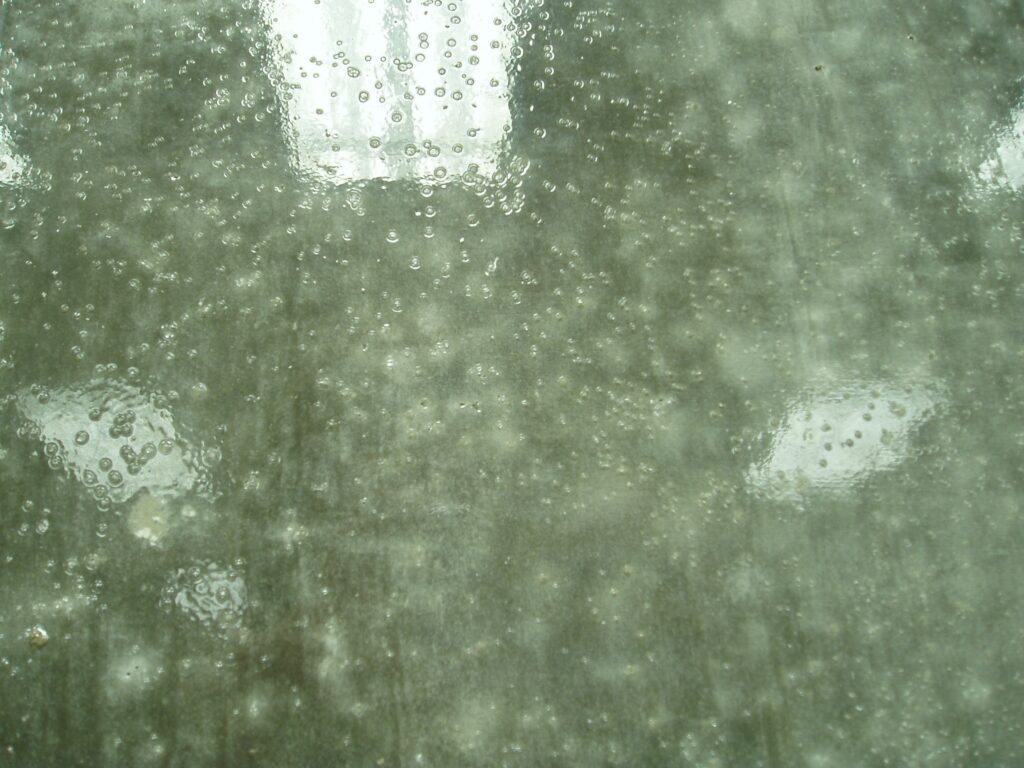
Bubbles in concrete sealer usually result from heavy product application. During application of the sealer, outgassing from the concrete surface should be free to quickly move through a thin, wet sealer film.
For instance, at a typical coverage rate of 300 square feet per gallon, one coat of an acrylic concrete sealer should be about 5 mils thick when wet. However, when the sealer is dry, it should be only about 2 mils thick. As a point of reference, a sheet of copy paper is 10 mils thick, and a credit card is 120 mils thick.
When you apply the sealer too heavily, the air displaced through the surface can’t escape, and it forms bubbles in the sealer surface. To resolve this, apply two thin coats, as opposed to one heavy coat.
In addition, bubbling of a sealer can also occur if applied in hot weather or if the concrete is exposed to direct sunlight. Under these conditions, the sealer will “skin over” and dry on the surface before all the solvent has evaporated. As the solvent attempts to evaporate, pressure buildup will form a bubble on the sealer surface. To avoid this issue, it’s best to apply concrete sealers during the coolest part of the day, when concrete isn’t in direct sunlight.
Problem #2:
Solvent-based sealer turns white, peels or flakes
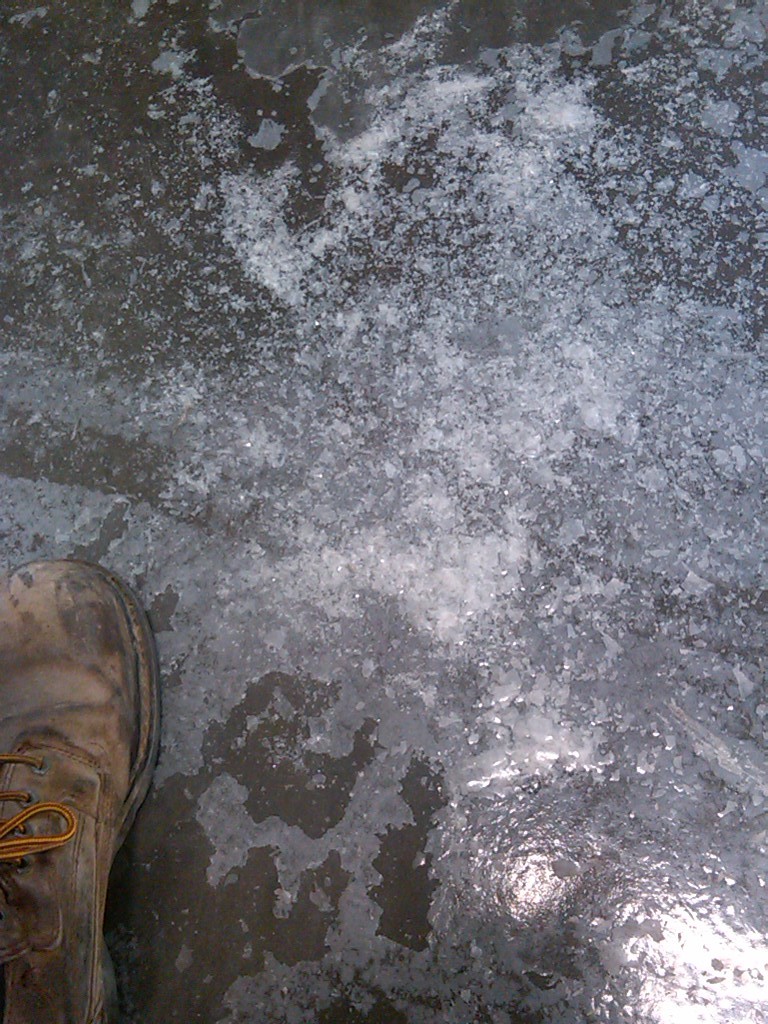
There are two key contributors to “blushing,” or whitening, of a solvent-based concrete sealer.
The first is applying the sealer to a wet concrete surface, or to fresh concrete that still contains bleed water. When this occurs, the sealer won’t bond to the concrete surface. Instead, it will float on the trapped film of water.
The second cause of sealer blushing is a too-thick application. Heavy coats of sealer, or a buildup of sealer applied many times over the years, will lead to moisture trapped under the sealer. In time, the sealer loses adhesion to the concrete. When this occurs, the trapped moisture and air under the debonded sealer create a refractive index. In turn making the sealer appear white to the human eye. Eventually, it will peel or flake off the surface.
To avoid this problem, carefully follow the manufacturer’s recommendations regarding coverage rate and the number of suggested coats. In addition, concrete you should not reseal the concrete until the previous coat(s) has worn away or been stripped off. Afterward, use a solvent wash and allow to fully dry.
Problem #3:
Water-based sealer is white or powdery
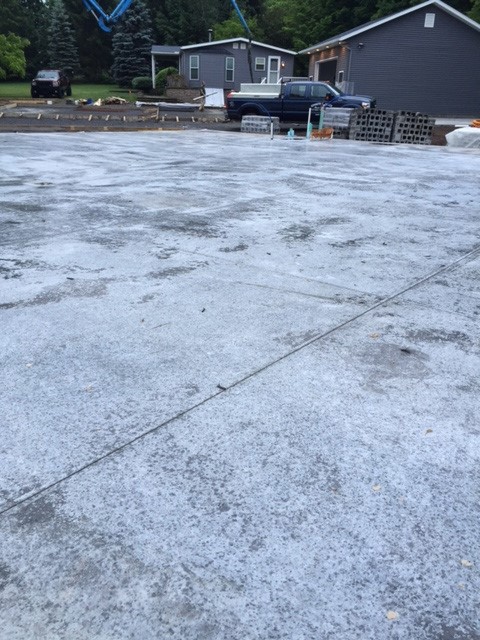
The drying process of water-based sealers is quite complicated. It is also significantly affected by the environment’s temperature and humidity during application. Water-based, acrylic sealers dry by a process called “coalescence.” During this process the water, and then the coalescing solvent, evaporate. This causes the acrylic particles fuse together to form the sealer film.
If the temperature during application is too low or humidity is too high, the coalescing solvent will evaporate before the water. The sealer will dry white or powdery because the latex particles didn’t fuse together before drying. As a best practice, always identify required temperature and humidity conditions for the successful application of a water-based sealer.
To resolve this issue, pressure wash or scrub the concrete to remove any loose debris, before allowing the sealer to completely dry.
Next, perform a solvent wash to bring the remaining product back to the surface and to re-establish the seal. If a solvent wash doesn’t provide the gloss and seal desired, apply a very light coat of sealer after the solvent wash has dried. Concrete cure-and-seal solutions typically last one to three years, so expect some peeling and flaking as the product wears away — particularly in areas of high traffic or direct sunlight.
When working with solvents, carefully follow the instructions and safety precautions outlined in the Product Data Sheet and Safety Data Sheet.
Problem #4:
Wear and tear stains the sealer
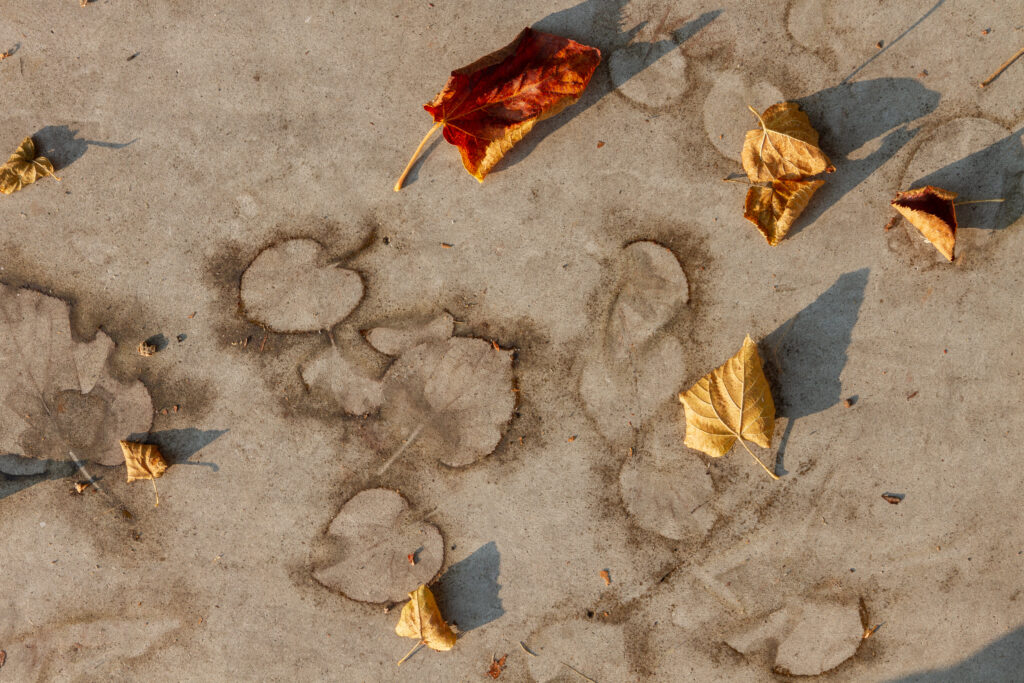
Over time, it’s not uncommon for concrete sealers to become stained from general wear and tear. Repeated or prolonged exposure to oil, tire treads, fertilizer and debris can also cause this problem. The most common concrete sealers are manufactured with acrylic polymers. These don’t provide exceptional chemical or stain resistance for the concrete.
To maximize durability and stain resistance, use an epoxy or urethane coating system. Be sure the coating is appropriate for exterior use before applying to concrete outdoors.
Problem #5:
Concrete is dark and/or blotchy after sealer application
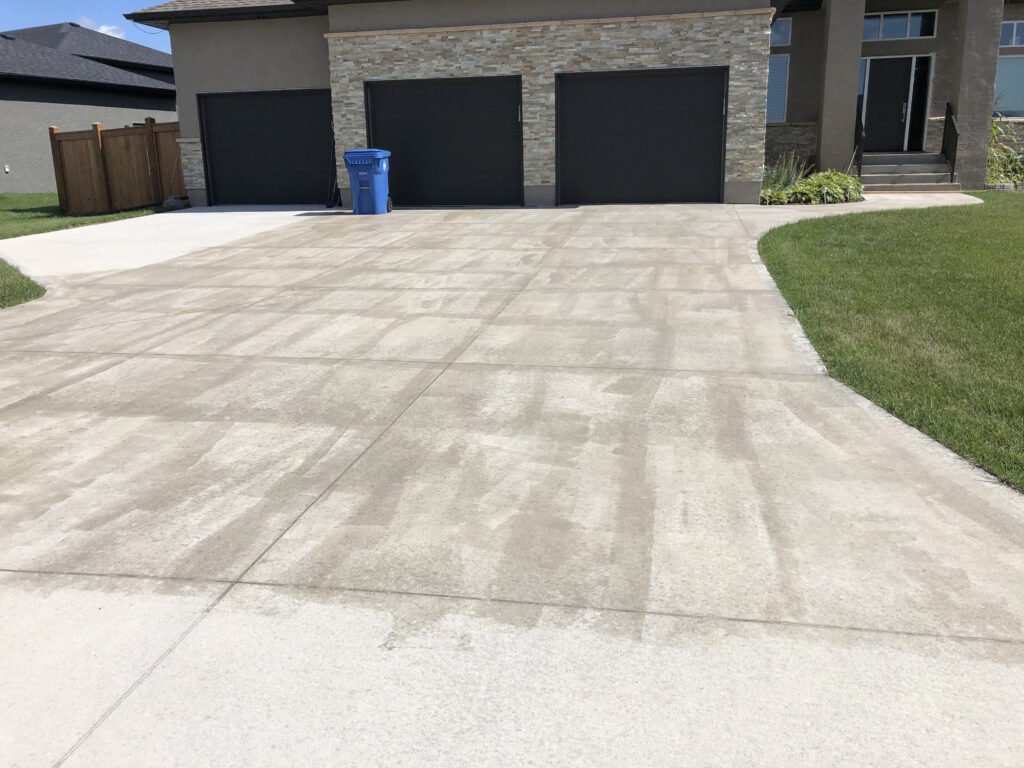
Most acrylic sealers will darken concrete and leave a glossy shine to some extent, giving the concrete a “wet” appearance. Because every slab is unique in its color and texture, the color of the concrete after sealer application can be difficult to predict. A variety of factors — such as mix design, use of chemical admixtures, finishing techniques or porosity — can have an impact on concrete surface color.
Using a sealer will deepen the true color of concrete and highlight disparities in the surface texture that result from floating and finishing. In addition, sealers bring out the “grain” in concrete, just like varnish does on wood. If changing the concrete color after sealing is a concern, the recommendation is to use a penetrating, water-repellent sealer. You can also perform a small test application of a film-forming sealer to ensure the result is acceptable.
Questions from Readers
Question
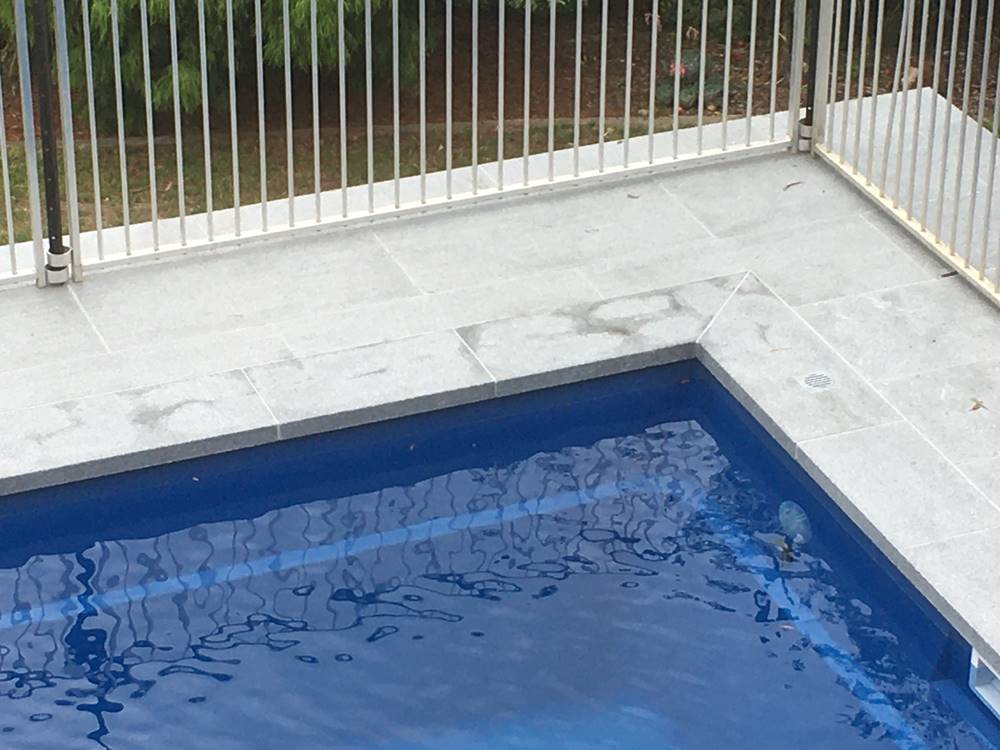
We had the pavers by our pool deck sealed by a professional paver sealer this past winter. We noticed that there were slight dark stains. After using the pool the stains in the pavers seem to have gotten worse. What can l do to fix them? Any ideas as to why it happened in the first place?
Answer from Concrete Decor
By chance did you watch the contractor apply the sealer to your pavers? Often, if you spray apply a sealer but do not back-roll it there may likely be areas where the sealer was not adequately applied. Pavers and concrete surfaces can often have “so-called” soft spots where the surface is overly absorbent. This means that sealer applied in one area can achieve proper penetration but in others areas less than favorable penetration and proper sealing.
I believe any coating should be back-rolled so that your sealer is evenly applied. The roller helps to improve penetration while also taking sealer from areas that have full saturation to areas that need additional sealer. Generally speaking, simply spray applying concrete sealers won’t do the job. Additionally, too much sealer is just as bad as not applying enough sealer, thus the importance of back rolling.
If you’re going to talk to your contractor about this problem. feel free to share this advice. Also, make sure that the existing surfaces are allowed to fully dry before another coat of the same sealer is reapplied. In other words, don’t trap moisture in the pavers with a second coat of sealer.

